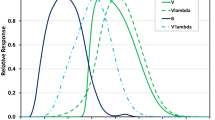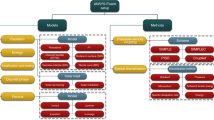Abstract
In order to improve the absorption of stray radiation traps and thermal radiation detectors of blackbody radiators and enhance the thermal radiation transmission, large aperture and high-emissivity blackbody radiators or compact space-borne blackbody sources can be developed. The design of blackbody cavity with V-grooves is a method to change the effective emissivity of blackbody radiation source. At the design stage, the most important work is to evaluate its radiation characteristics in order to verify the effectiveness of this method. Two kinds of blackbody cavity models are designed in this paper. One is a cylindrical–conical blackbody cavity with a 2-mm deep 50° angle V-grooves (the cavity is 300 mm long and 80 mm in diameter, with a depth of 277 mm the cone part of the cavity is 23.09 mm long, the top angle of the cone is 120°, the wall thickness is 2 mm, and the surface will be painted with 0.95 emissivity coating). The other is the blackbody cavity model with the same structure and smooth inner wall. Using the special software based on Monte Carlo method, the radiation characteristics of the two blackbody cavity models are simulated under isothermal conditions. The average normal effective emissivity and right-conical effective emissivity of the blackbody cavity with different observation radius are obtained, respectively. The results show that the average normal effective emissivity and right-conical effective emissivity of the blackbody cavity with V-grooves on the inner wall are increased. In addition, the experimental results of radiative properties of the blackbody radiator having the V-grooved cavity measured by thermal cavity reflectometry method agree with the theoretical simulation results. Therefore, it is proved that the blackbody cavity with V-grooves on the inner wall (except for special angles) can be an effective way to improve the emissivity of the blackbody source.






Similar content being viewed by others
References
A. Prokhorov, L. Hanssen, S. Mekhontsev, Radiation properties of IR calibrators with V-grooved surfaces Defense and Security Symposium. Int. Soc. Opt. Photonics 620505, 620505–620509 (2006)
R. Christensen, G. Mehall, S. Silverman et al., Miniature thermal emission spectrometer for the Mars exploration rovers. J. Geophys. Res. 108, 8064–8066 (2003)
X. Xiong, K. Chiang, J. Esposito, B. Guenther, W. Barnes, MODIS on-orbit calibration and characterization. Metrologia 40, S89–S92 (2003)
J. Ishii, M. Kobayashi, F. Sakuma, Effective emissivities of black-body cavities with grooved cylinders. Metrologia 35, 175–180 (1998)
J. Wang, Z. Yuan, X. Hao, T. Wang, Y. Duan, A − 30 °C to 80 °C stirred-liquid-bath-based blackbody source. Int. J. Thermophys. 36, 1766–1774 (2015)
Y. Zhao, J. Wang, Z. Yuan et al., Study on the performance of low-temperature blackbody radiation source. Acta Metralogica Sin. 38, 589–592 (2017)
“STEEP 3 version 1.3” User’s Guide, Virial. Inc
H. Ko, B. Wen, S. Tsa et al., A high-emissivity blackbody with large aperture for radiometric calibration at low-temperature. Int. J. Thermophys. 30, 98–104 (2009)
J. Wang, Z. Yuan, Y. Duan, in Comparison of the emissivity uniformity of several blackbody cavities. Temperature: its measurement and control in science and industry, Volume 8: proceedings of the ninth international temperature symposium, vol. 1552 (AIP Publishing, New York, 2013), pp. 757–761
Z. Yun, J. Wang, L. Wang et al., Measurement of blackbody emissivity based on thermal cavity reflectometry. J. Optoelectron. Laser 4, 425–429 (2019)
Author information
Authors and Affiliations
Corresponding author
Additional information
Publisher's Note
Springer Nature remains neutral with regard to jurisdictional claims in published maps and institutional affiliations.
Selected Papers of the 14th International Symposium on Temperature and Thermal Measurements in Industry and Science.
Rights and permissions
About this article
Cite this article
Zhao, Y., Wang, J., Feng, G. et al. Comparative Study on Radiation Properties of Blackbody Cavity Model Based on Monte Carlo Method. Int J Thermophys 41, 71 (2020). https://doi.org/10.1007/s10765-020-02648-1
Received:
Accepted:
Published:
DOI: https://doi.org/10.1007/s10765-020-02648-1




